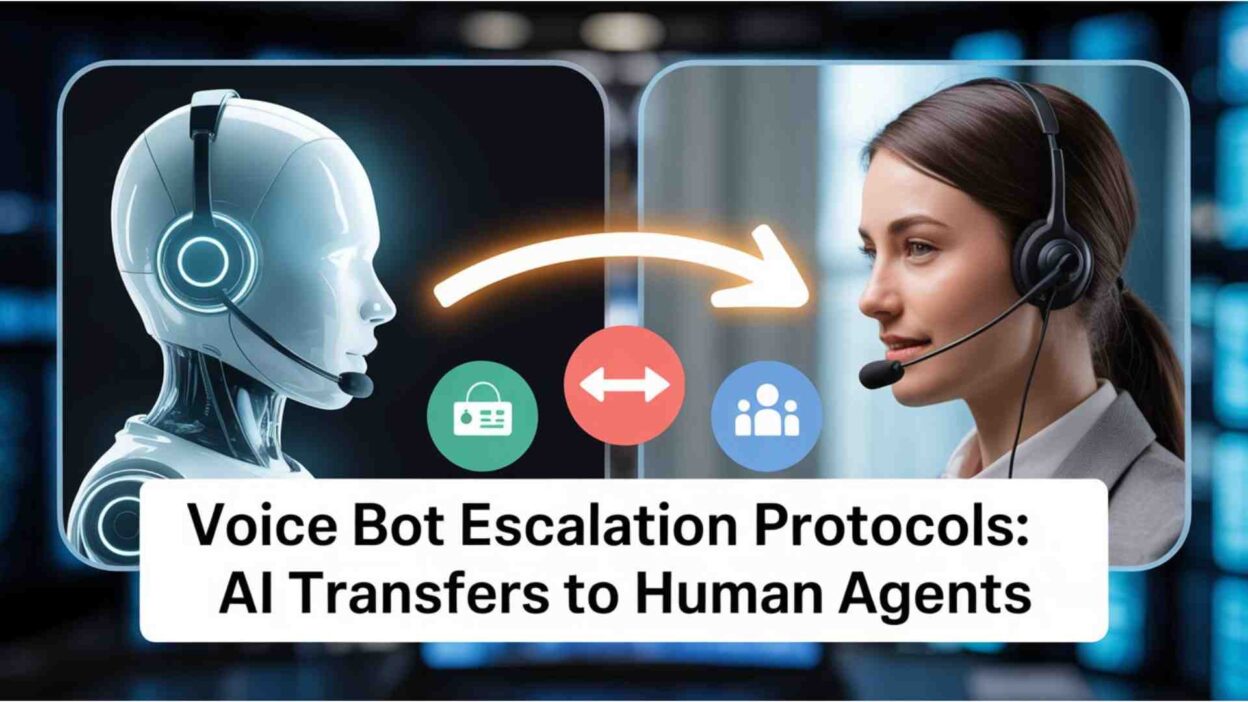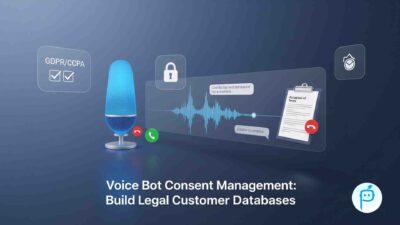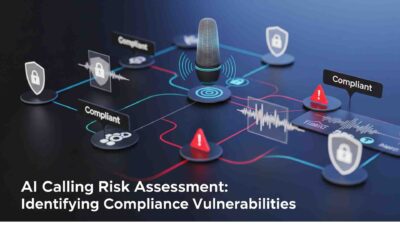Customer service has changed dramatically in recent years. AI-powered voice bots now handle millions of customer interactions daily. These systems work well for routine questions. They struggle with complex problems.
Table of Contents
The critical moment comes when a voice bot reaches its limits. The system must transfer the conversation to a human agent. This handoff can make or break the customer experience.
Companies that master voice bot escalation gain significant advantages. They achieve higher customer satisfaction scores, reduce operational costs, and build stronger customer relationships.
Understanding Voice Bot Escalation Fundamentals
Voice bot escalation happens when AI systems cannot resolve customer issues. The technology identifies its limitations. It transfers the conversation to human agents.
Modern customers expect instant solutions. They want quick answers regardless of complexity. Voice bots excel at handling routine inquiries. They provide fast information retrieval. They process standard requests efficiently.
The challenge lies in recognizing when human intervention becomes necessary. Poor timing leads to frustrated customers. Delayed escalation creates negative experiences.
Research shows clear customer preferences. 67% of customers prefer human agents for complex issues. 84% accept AI assistance for routine questions. The key is accurate identification of each interaction type.
Common Triggers for AI to Human Handoff
Emotional Distress Situations
Customers express frustration in various ways. They may raise their voice, use negative language and express anger directly.
Voice bot escalation protocols must detect these emotional signals. Human empathy becomes essential in these moments. AI systems lack the emotional intelligence needed.
Customer complaints require careful handling. Service quality issues need human judgment. Billing disputes often involve complex decisions.
Technical Complexity Beyond AI Capabilities
Complex technical problems exceed voice bot capabilities. Multi-step troubleshooting requires human expertise. Specialized knowledge becomes necessary.
Account security concerns demand human oversight. Policy exceptions need human approval. Special circumstances require flexible thinking.
Customers who explicitly request human help should receive immediate transfers. Forcing continued AI interaction increases frustration levels.
Smart Call Routing Systems and Implementation
Smart call routing goes beyond simple queue management. These systems analyze multiple factors. They match customers with the most suitable agents.
Skill-Based Agent Matching
Advanced routing systems maintain detailed agent profiles. They track technical expertise areas, monitor language proficiencies, record product knowledge levels.
The system considers the customer’s specific issue. It identifies relevant technical problems. It matches these with agent capabilities. This targeted approach improves resolution rates significantly.
Dynamic Load Balancing
Smart call routing monitors agent availability continuously. It tracks current workload levels. It analyzes performance metrics in real-time.
The system distributes calls intelligently. It considers agent expertise, evaluates current case complexity and reviews historical performance data.
This approach maximizes team efficiency. It ensures consistent service quality. It prevents agent burnout from overloading.
Building Effective Voice Bot Escalation Protocols
Intelligent Detection Systems
Modern escalation systems use advanced natural language processing. They study customer speech, notice changes in emotions, and spot growing frustration.
Sentiment analysis algorithms monitor conversations continuously. They track changes in voice tone, spot specific language patterns, and predict when customers need escalation before transfers are requested.
Complexity assessment algorithms evaluate inquiry difficulty. They compare questions against knowledge base capabilities. They identify when issues exceed AI parameters.
Contextual Information Transfer
Successful handoffs preserve all relevant conversation context. The system creates detailed interaction summaries. It includes customer identification status. It records complete conversation history.
Human agents receive instant access to this information. They understand the customer’s situation immediately. They continue conversations naturally. Customers avoid repeating information.
Seamless Transition Management
The handoff moment requires careful orchestration. The voice bot explains transfer reasons clearly. It introduces human agents professionally. It sets proper expectations.
Effective transitions feel like natural progressions. They don’t seem like system failures. The human agent acknowledges the transfer immediately. They reference previous AI interactions.
Measuring Success in Voice Bot Escalation
Key Performance Indicators
Organizations must track multiple metrics. Overall escalation rates provide baseline insights. Industry benchmarks typically range from 15-25% for customer service bots.
Escalation patterns reveal important trends. They display performance by issue type, show success in different customer groups, and highlight variations by time of day.
Handoff Quality Metrics
Context preservation scores measure information transfer success. Customer satisfaction ratings evaluate handoff experiences. Agent preparation time indicates system efficiency.
Successful handoffs result in immediate agent understanding. Poor handoffs require information repetition. Confused agents create negative experiences.
Resolution Effectiveness
First-call resolution rates for escalated calls indicate routing success. Customer satisfaction scores for escalated interactions measure overall experience quality.
Post-escalation resolution metrics show whether customers reach appropriate agents. They indicate smart call routing effectiveness. They measure agent capability matching.
Common Challenges and Solutions
Premature Escalation Problems
Voice bots sometimes escalate too quickly. They encounter minor difficulties and transfer immediately. This reduces AI efficiency benefits. It overwhelms human agents with simple cases.
Modern systems implement adaptive persistence algorithms. They try different ways to solve problems, ask questions in new ways, and give alternative explanations.
Delayed Escalation Issues
The opposite problem occurs when bots persist too long. They attempt solutions beyond their capabilities. Customers become increasingly frustrated. Negative experiences result.
Effective systems use proactive escalation triggers. They track conversation length, count repeated failed attempts, and analyze customer emotions.
Context Loss During Transfers
Technical problems can eliminate conversation context. Integration issues cause information loss. Customers must repeat everything. Resolution processes restart completely.
Robust systems implement multiple context preservation layers. They keep real-time conversation logs, create automated summaries, and store backup data.
Advanced Features and Future Innovations
Predictive Escalation Capabilities
Advanced AI systems predict escalation needs before customers request human help. They study conversation patterns, check customer history, and assess how complex issues are.
These systems identify situations likely requiring human intervention. They get agents ready in advance, cut wait times, and improve handoff quality.
Emotional Intelligence Integration
Future escalation systems will incorporate advanced emotional intelligence. They will detect subtle emotional cues. They will respond appropriately to stress signals.
These systems recognize frustration before explicit expression. They help escalate issues early, avoid bad experiences, and track customer satisfaction.
Collaborative Problem-Solving
Emerging technologies enable AI-human collaboration. AI systems continue supporting human agents during escalated calls. This creates hybrid assistance models.
The AI provides real-time suggestions. It accesses databases automatically. It handles routine aspects of complex calls. Human agents focus on challenging elements.
Best Practices for Implementation
Customer Experience Priority
Successful escalation protocols prioritize customer experience over operational efficiency. They design systems that feel natural. They create supportive interactions.
Every escalation should feel like helpful progression. Handoffs must seem seamless and professional. Service quality remains consistent throughout interactions.
Gradual Implementation Strategy
Smart organizations use gradual rollout approaches. They begin with certain customer groups, target specific inquiry types, and limit the initial time frame.
This approach allows testing and optimization. It helps identify issues, improve processes, and collect valuable customer feedback.
Comprehensive Agent Training
Human agents need specialized training for escalated calls. They should understand what AI can and can’t do, know how to summarize context, and manage customer expectations effectively.
Training covers technical aspects and soft skills. It addresses frustrated customer handling. It includes AI-generated information usage. Regular refresher sessions maintain current knowledge.
Cost-Benefit Analysis and ROI
Implementation Investment
Initial costs include technology platform licensing. Integration expenses add significant amounts. System customization requires additional investment. Agent training demands ongoing resources.
Modern platforms like comprehensive escalation services reduce custom development needs. They provide built-in capabilities. They minimize integration complexity.
Operational Benefits
Well-designed protocols reduce operational costs significantly. They help resolve issues on the first call, shorten handling time, and boost agent productivity.
Benefits extend beyond direct cost savings. Benefits include happier agents, less training needed, and better use of resources.
Revenue Impact
Effective voice bot escalation positively impacts revenue streams. It boosts customer satisfaction, helps retain more customers, and creates opportunities for upselling.
Organizations report 20-30% customer satisfaction improvements. They achieve 15-25% retention rate increases. These improvements translate to increased customer lifetime value.
Regulatory Compliance Requirements
Disclosure and Consent
Voice bot escalation protocols must inform customers about AI interaction nature. They must provide clear human agent access rights. They must offer easy request methods.
Current regulations require immediate opt-out options. Systems must respect human assistance requests. They must provide clear pathways. Failure results in regulatory violations.
Data Protection Standards
Escalation protocols involve customer data transfer between systems. This transfer must comply with privacy regulations. It must implement appropriate security measures.
Data retention must follow regulatory requirements. It must obtain proper processing consent. It must provide customer control options. Systems should implement data minimization principles.
Quality Assurance Documentation
Compliance requires detailed escalation procedure documentation. Systems must maintain comprehensive transfer logs. They must record decision reasoning. They must track outcome results.
Regular audits ensure continued compliance. They check how accurate escalation triggers are, analyze customer satisfaction, and find areas to improve.
Technology Integration Considerations
AI Platform Integration
Successful escalation requires seamless system integration. AI platforms must connect with human agent systems. They must support real-time data transfer. They must maintain conversation context.
Integration must support bidirectional data flow. Human agents need AI-generated insights. AI systems must learn from human resolution patterns. This creates continuous improvement loops.
CRM and Knowledge Base Connection
Effective protocols require complete CRM integration. Escalated agents need instant customer history access. They need previous interaction records. They need account status information.
This integration eliminates information repetition. It offers personalized help, automatically shares relevant product details, and suggests solutions based on customer history.
Real-Time Analytics and Monitoring
Systems must provide real-time escalation visibility. They must track agent performance metrics. They must monitor customer satisfaction outcomes.
Analytics enable trend identification. They help optimize routing, allow quick performance changes, and support ongoing improvements to protocols.
Read More: Real-Time AI Call Coaching: Transform Your Sales Team Today
Conclusion

Voice bot escalation protocols represent critical customer service components. They bridge AI capabilities with human expertise. They create unified customer experiences.
Success requires investment in sophisticated technology. It demands comprehensive training programs. It needs continuous optimization efforts. Organizations treating escalation as strategic initiatives achieve better outcomes.
The regulatory landscape continues evolving. It emphasizes transparency and customer control. It demands ethical AI use. Escalation protocols must remain adaptable to future changes.
Future customer service integration will combine AI and human strengths. It will deliver appropriate help at optimal moments. Voice bot escalation protocols enable this seamless integration.
Companies that master AI to human handoff will lead their industries. They’ll deliver great customer experiences, build strong relationships, and drive steady growth in competitive markets.






[…] Read More: Voice Bot Escalation Protocols: AI Transfers To Human Agents […]
[…] Automated vs human support systems work together in hybrid implementations. Voice bots filter and qualify calls before human agent transfer. Agents receive pre-qualified leads with complete interaction histories. […]